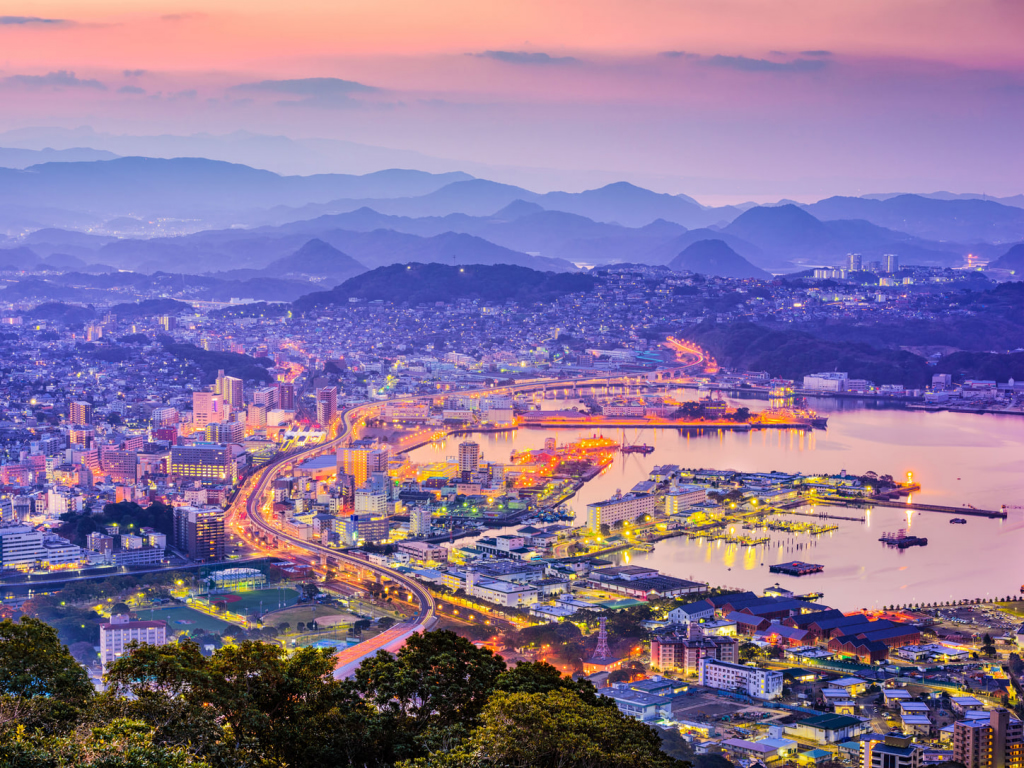History books will remember Nagasaki Prefecture for the atomic bombing of World War II, but beyond this infamous tragedy this coastal land in northwestern Kyushu boasts a fascinating past. Centuries-old landmarks remain from Nagasaki’s time as one of the key points of contact between Japan and the rest of the world.
The communities and islands along Nagasaki Prefecture’s coast were once refuge for the Kakure Kirishitan (hidden Christians), people practicing Christianity in secret during Japan’s long ban on the religion. The roots of Christianity in Japan can still be seen at the many churches scattered about these lands.
Aside from historic events, Nagasaki Prefecture is known throughout Japan for its astounding seafood and diverse landscape, which offers beautiful seaside views, along with an omnipresent lush green nature.
Nagasaki city still carries the traces of Japan’s first contacts with foreign cultures. Take a stroll through its hilly landscape and let the city tell you a story. It was the center of Portuguese and Dutch trade during the 16th century, the only port opened to foreign countries during Japan’s isolation, and the theater of a tragedy during World War II when it suffered an atomic bomb attack. The history of Nagasaki reflects on its streets where bits and pieces of different cultures and past events coexist, making it a true open-air museum.
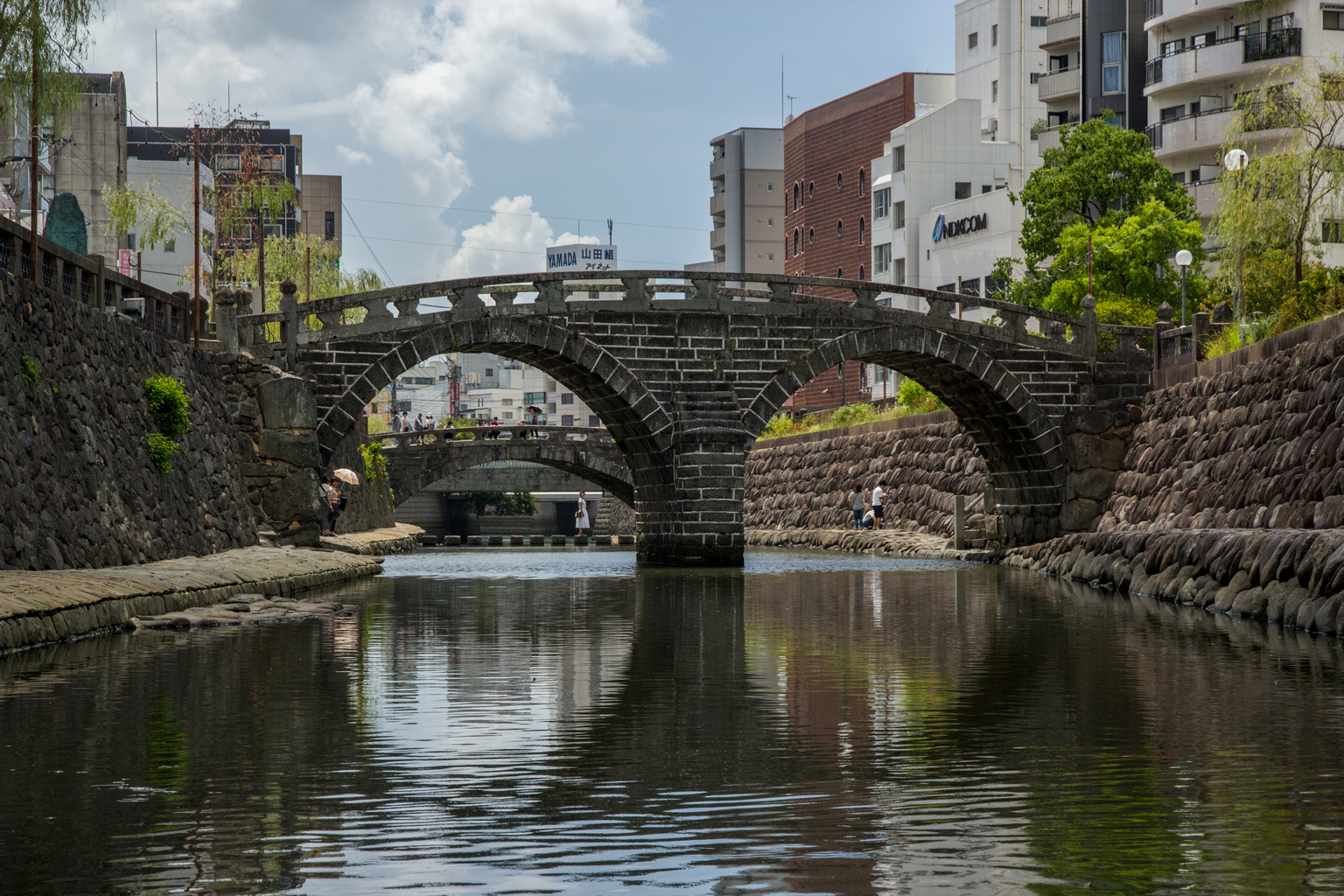
Megane Bridge
Explore the Peace Park, the Atomic Bomb Museum and the Peace Memorial Hall. All these commemorative facilities were built near the hypocenter of the atomic explosion on August 9, 1945.
A short walk east of the Peace Park is the rebuilt Urakami Cathedral, and hidden away on a slope in a residential area is Sanno Shrine. This shrine has become known for its torii gate, which was damaged by the blast of the atomic bomb and now only has one leg.
While you’re in the city, make sure to explore the stone bridges over the Nakashima River. The most popular is Meganebashi (Spectacles Bridge), which takes its name from the reflection its two arches create in the water.
Nearby Chinatown is another historical sign of the presence of international traders in Nagasaki. Teramachi-dori (Temple Street) houses a number of Buddhist temples with a more Chinese feel. You can explore the area while savoring street food like kakuni manju (melt-in-your-mouth stewed pork on a bun). Don’t leave Nagasaki without trying chanpon, the city’s signature dish. This filling bowl of noodles contains pork, seafood, vegetables and other ingredients depending on the restaurant.
Right next to Chinatown is Dejima, a place originally built to constrain foreign traders, housing first the Portuguese and later the Dutch. Dejima wharf is the perfect place to stop and rest, with its inviting outside tables and the view of the port. For something sweet try a slice of castella, a typical Nagasaki sponge cake that has its roots in the Portuguese trading of the 16th century.
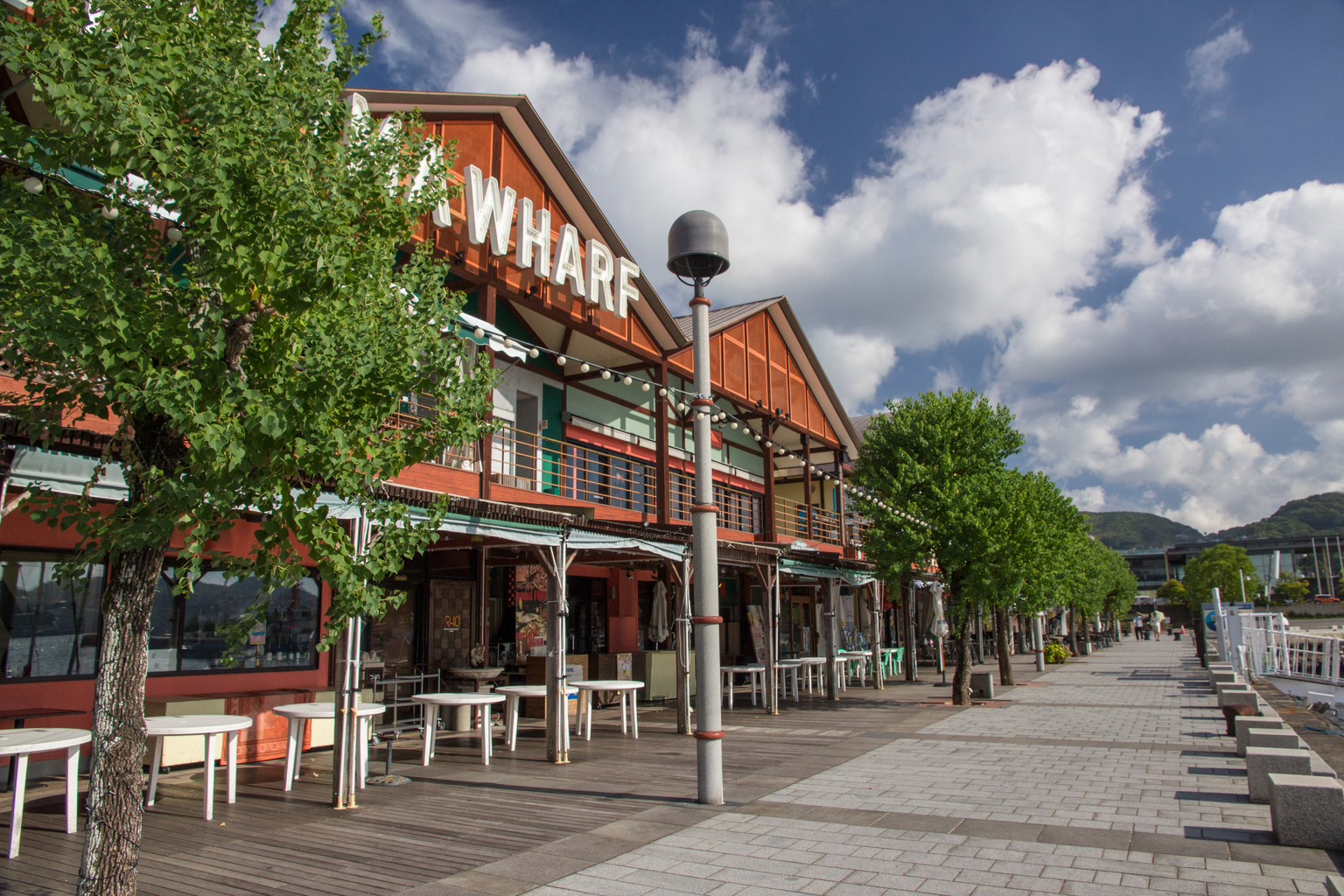
Dejima
Take the ropeway up to Mount Inasa to admire the whole of Nagasaki city from above. Nagasaki’s cityscape has been ranked among the best three views in Japan and even the world, alongside Hong Kong and Monaco. From both ground level and up high, this city is full of beautiful surprises.
South of Nagasaki city, the Shimabara Peninsula offers a more relaxing experience, with an abundance of nature surrounding Mount Unzen and some of the hottest and most active hot springs in Japan.
Take a bus ride through rice fields and beautiful coastal views to Obama, a quiet hot spring town that prides itself for having Japan’s longest foot bath – Hot Foot 105. The town is literally billowing with steam coming out of vents and pipes along the streets and as a result the smell of sulfur fills the air. You can even cook your own food over the natural hot spring steam.
Further on is Unzen, famous for its steamy hot spring fields that people affectionately call “hells.” Panoramic paths lead visitors through approximately 30 hells, all located around the Unzen hot spring resort area. When they’re not crossing steaming rocky areas, the paths will lead you through patches of luxuriant nature.
You can top your relaxing hot spring experience with a journey into the natural beauty of Unzen Amakusa National Park and Mount Unzen. At Nita-toge Pass, hop on a ropeway that will take you up the mountain to an observation deck where you can admire the surrounding area.
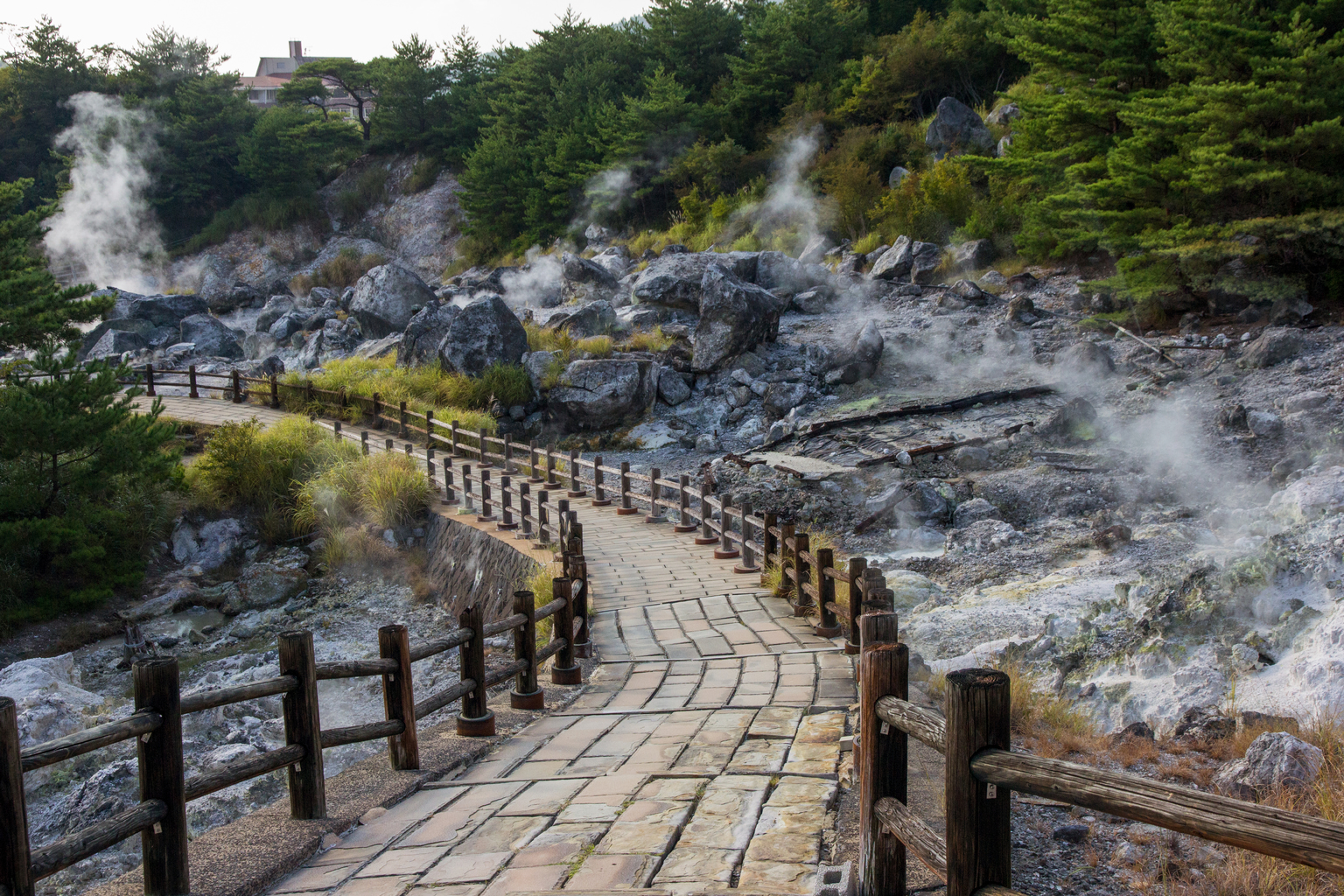
Unzen
Head towards the northern part of Nagasaki Prefecture and visit Sasebo, another important port city that was greatly influenced by the presence of a U.S. Navy base. Take a stroll through Huis Ten Bosch, a “small Europe” that’s modeled on the Netherlands, and head up to one of Sasebo’s observatories to admire the breathtaking view of the Kujukushima Islands, a group of 208 mostly uninhabited islands.
Local life in Sasebo revolves around the Sasebo Yonkacho Shotengai, a covered shopping arcade that stretches through the city. It has a local feel and it’s lined with many shops and restaurants where you can find all your daily necessities.
Sasebo proudly boasts a couple of unusual dishes: the Sasebo burger and lemon steak (pictured above). The city hosts a U.S. Navy base, and Japanese cooks first started making burgers to appeal to hungry seamen. Nowadays Sasebo burger has become a revered specialty and the Sasebo Burger Association was created to certify official burger shops.
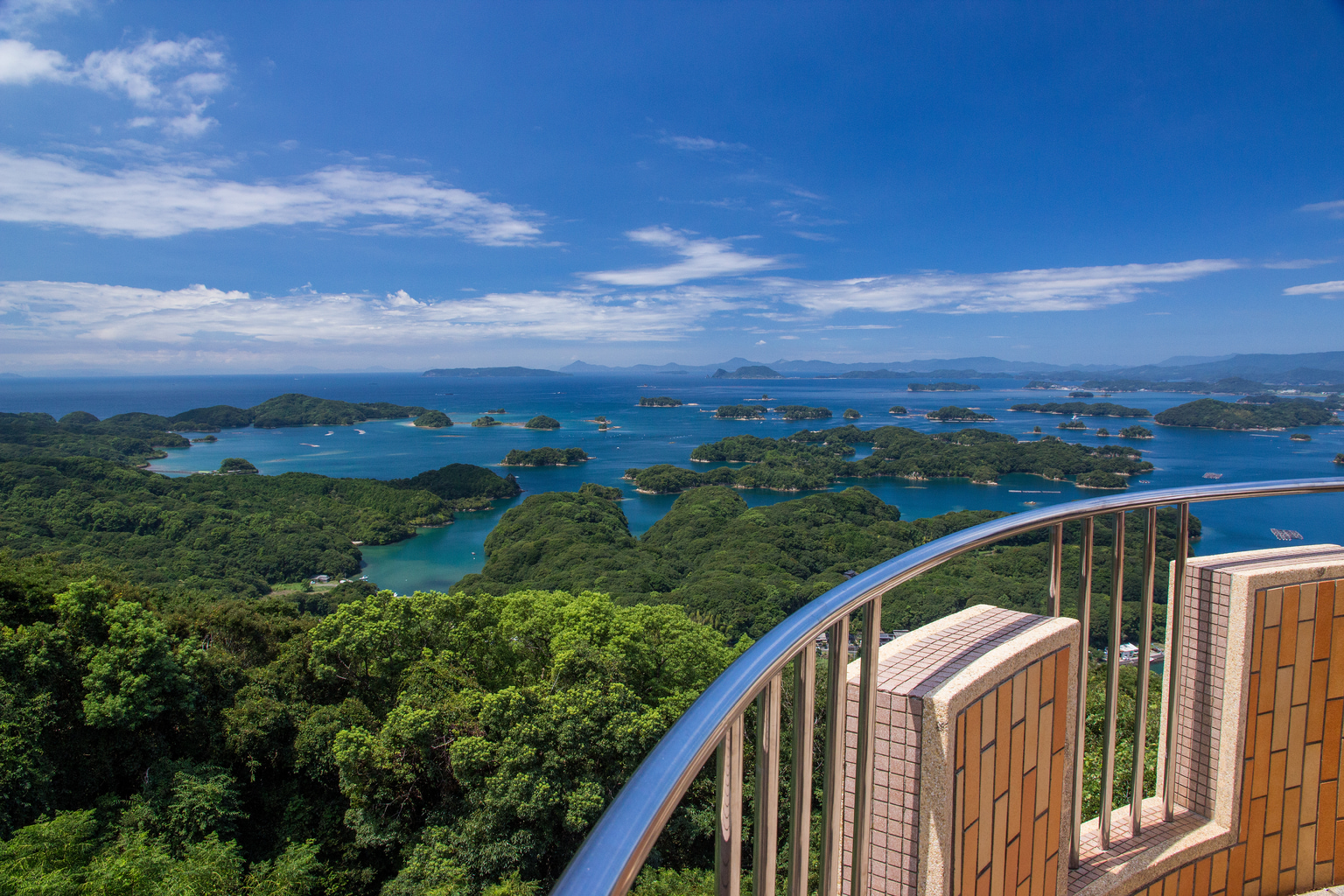
Kujukushima Islands as seen from Sasebo
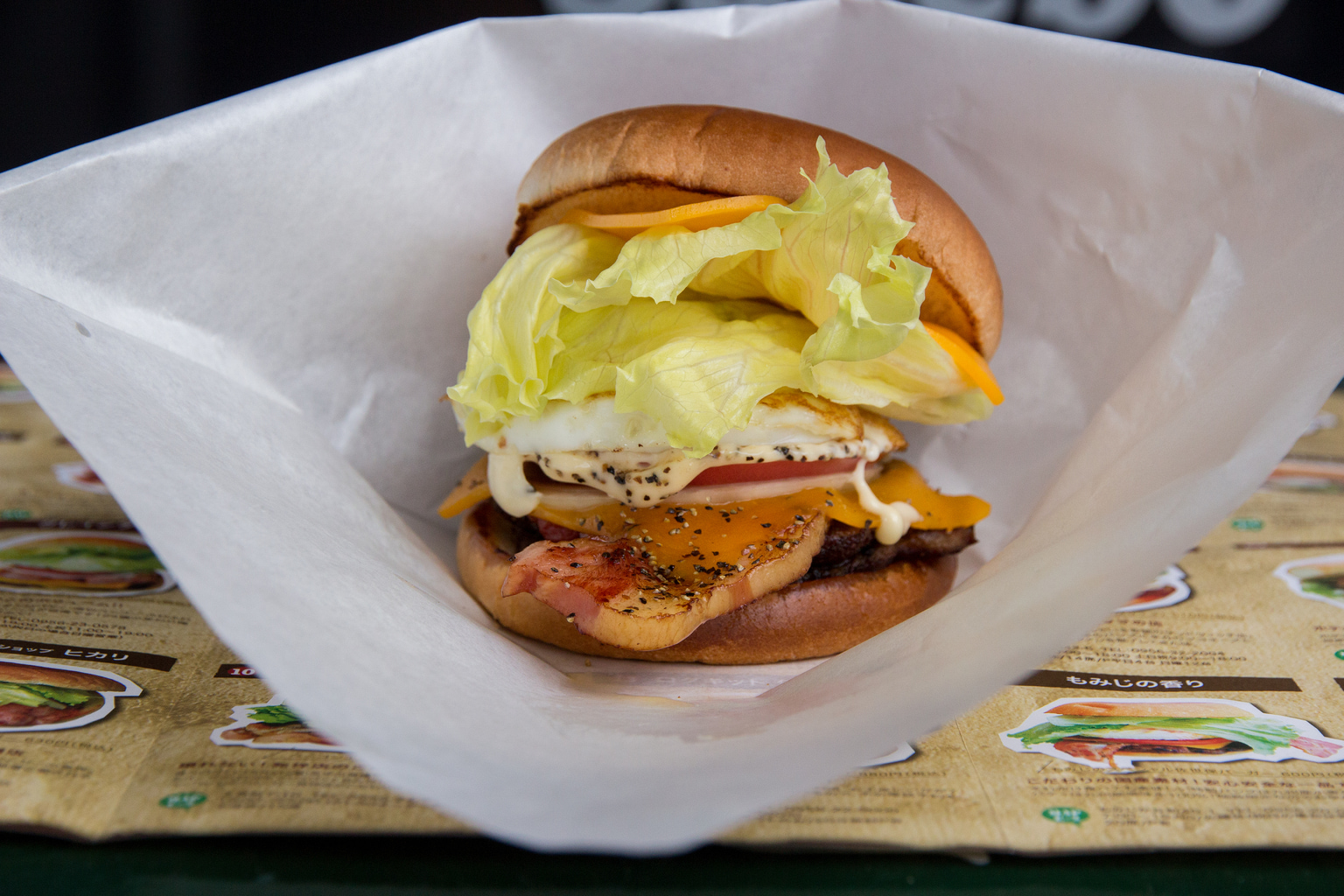
Saseboburger
The stunning Kujukushima Islands are mostly uninhabited, and you can take a panoramic cruise through them from Sasebo. Also consider the peculiar experience of cruising the islands on a pirate ship. North of Sasebo is Hirado, an off-the-beaten-path island that houses Hirado Castle and a Dutch trading post.
Venture further into the East China Sea from Sasebo or Nagasaki port and you’ll find the Goto Islands, famous for being one of the hiding places for persecuted Christians. Nestled among the five main islands of Fukue, Hisaka, Naru, Wakamatsu, and Nakadori are many Christian churches. The islands also offer a paradise-like landscape made of clear blue waters, lush vegetation and deserted beaches.
Fukue Island, the largest of the five main islands of the archipelago, is a jokamachi (castle town) and its castle was the last one built in Japanese history. Its grounds are now used as the Goto High School. The tranquil town also features an area called Bukeyashiki Samurai Street, where samurai used to live during the Edo Period (1603-1868). The stone walls and wooden gates survived to this day and walking among them makes for a pleasant stroll.
In Nagasaki Prefecture you will find both a natural paradise and a wealth of historic sites. Find your peace of mind in its untamed nature and revel in the delicious cuisine it has to offer.

